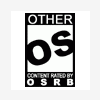I wasn't really sure where to post this query.
I recently had the Google Redirect problem which was sorted out with help from the Geeks to Go anti-malware forum.
I have a new problem now (maybe related to the above?). When my PC starts up, I often get an error from Avast Version 4.8 Home Edition (Error log 10050) saying that they cannot be run. My firewall (Sunbelt Personal firewall - free edition)also brings up an error saying that an error has occured and it has to close. I am also unable to connect to the internet when this happens, although my PC shows that I am connected to my wireless network. I may have to reboot 4 or 5 times then it works as normal, but then happens again the next day - the number of reboots it takes to get it working is increasing!
I have tried Windows XP system restore a few times and this sometimes works, but not everytime. It's very frustrating.
Any ideas? Any help appreciated.
Thanks.
Dickie

















 Sign In
Sign In Create Account
Create Account

